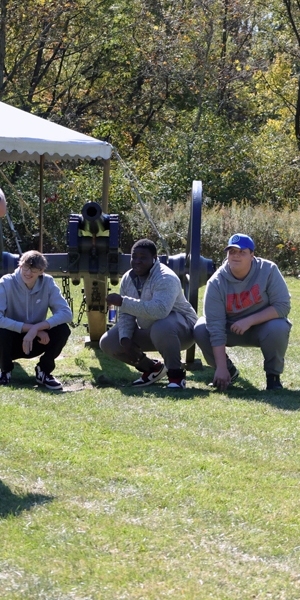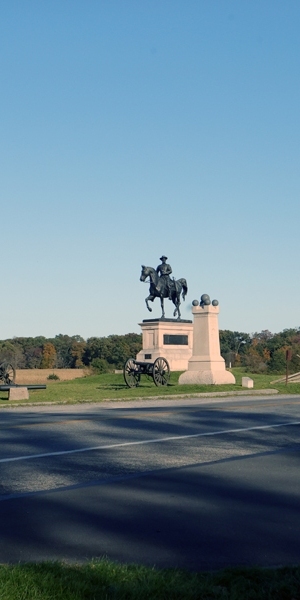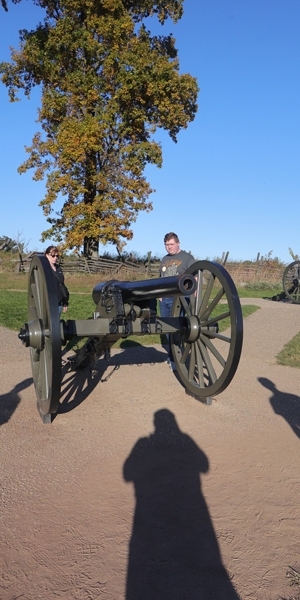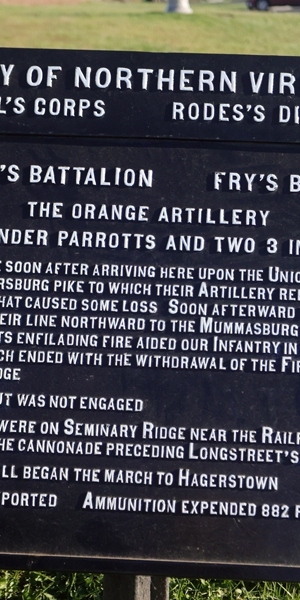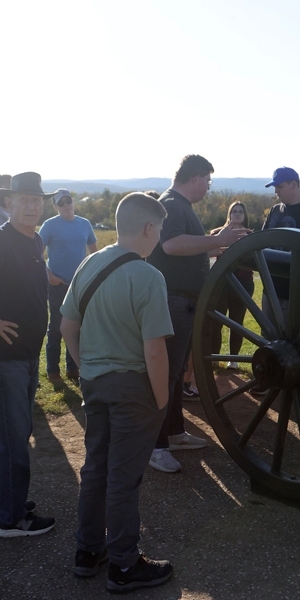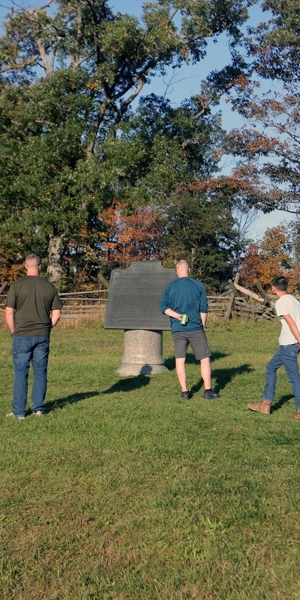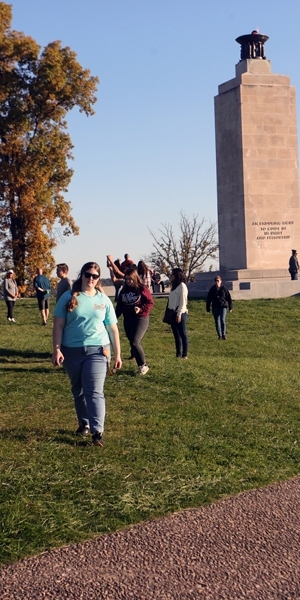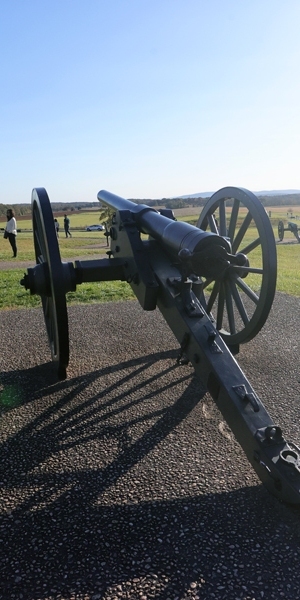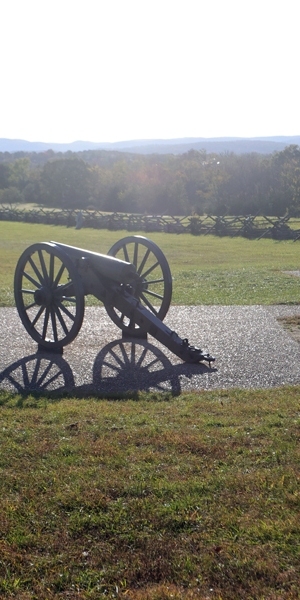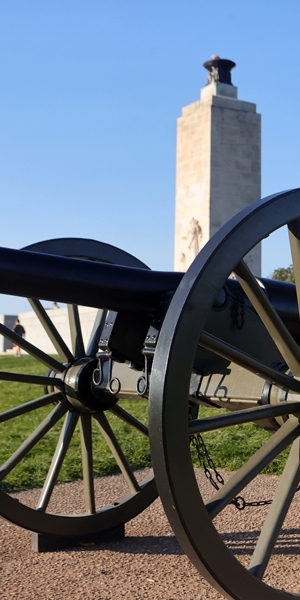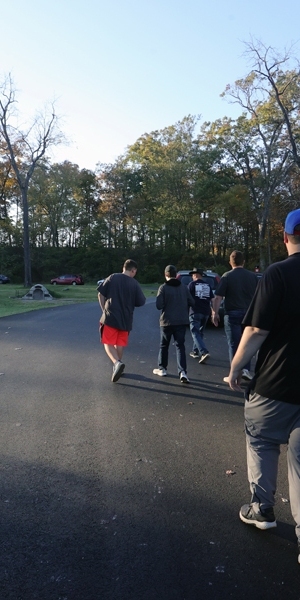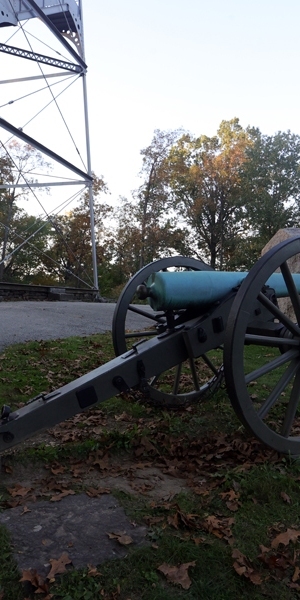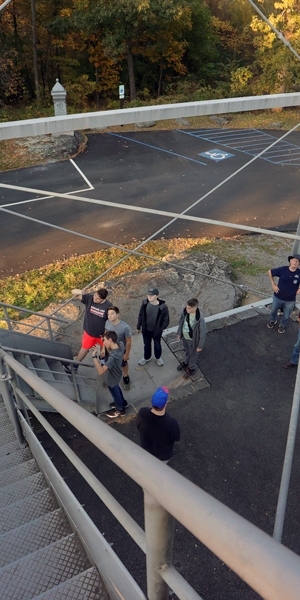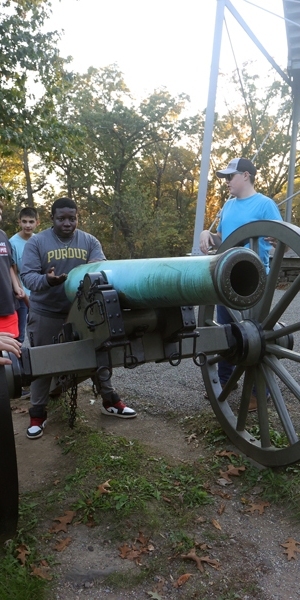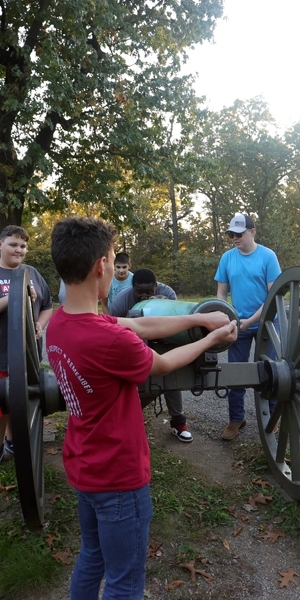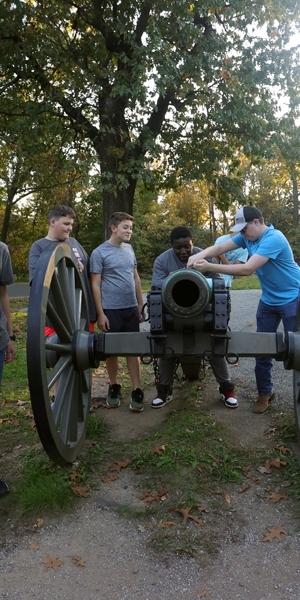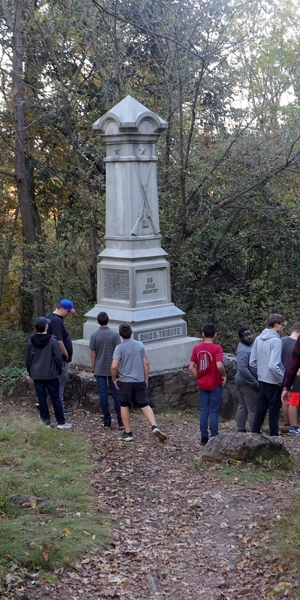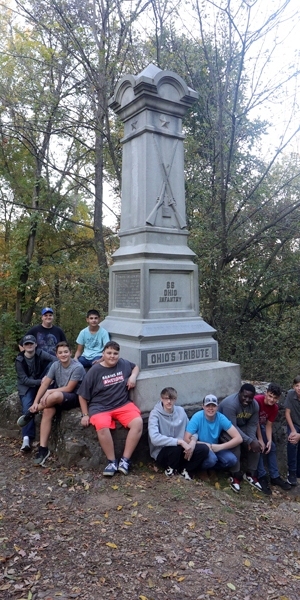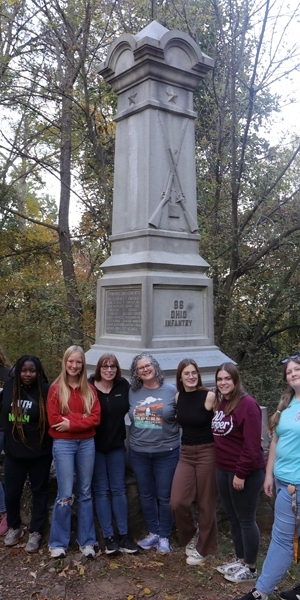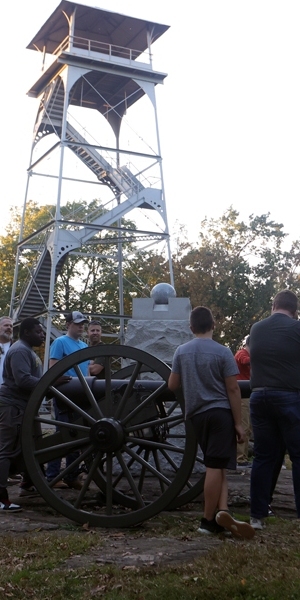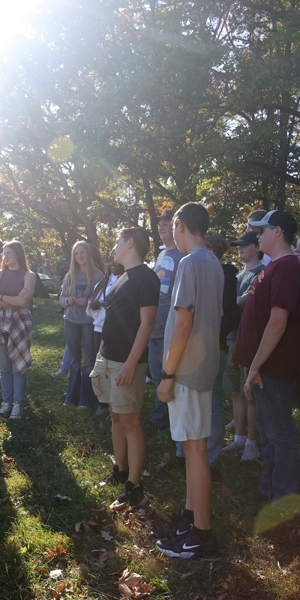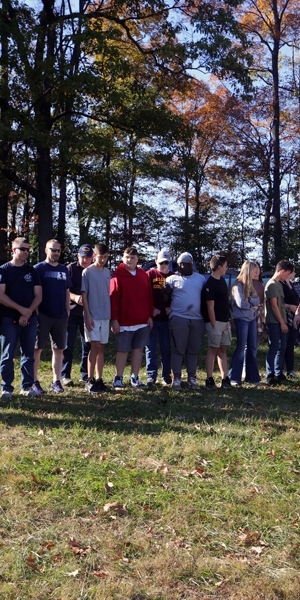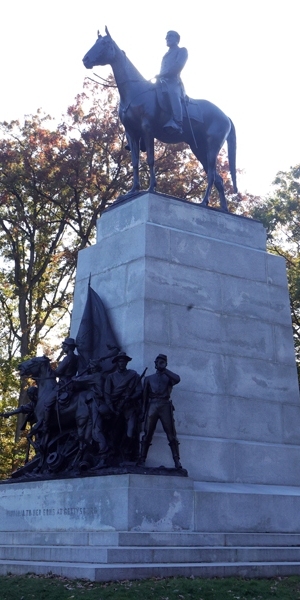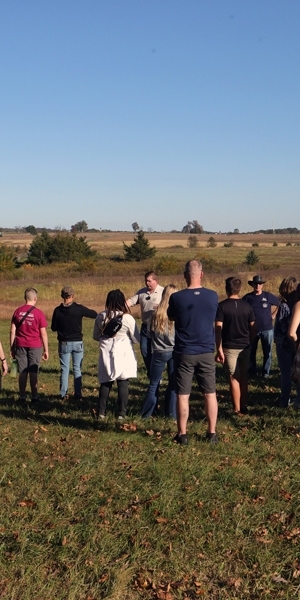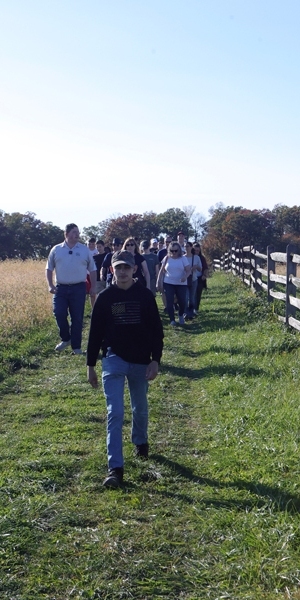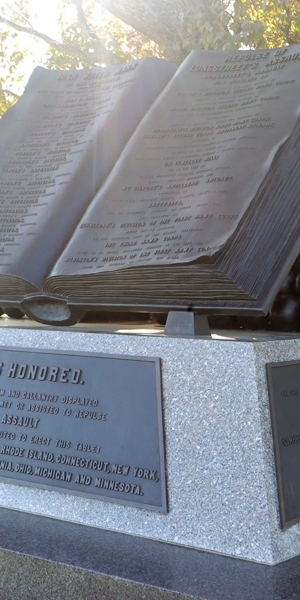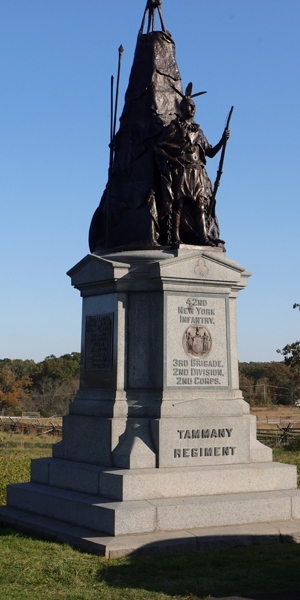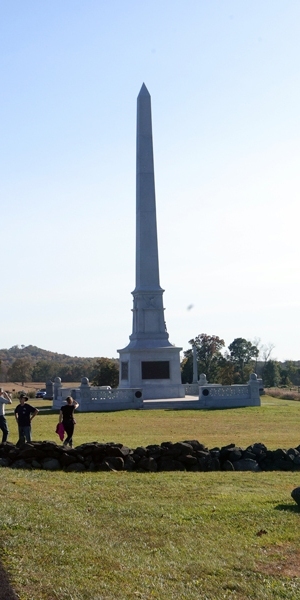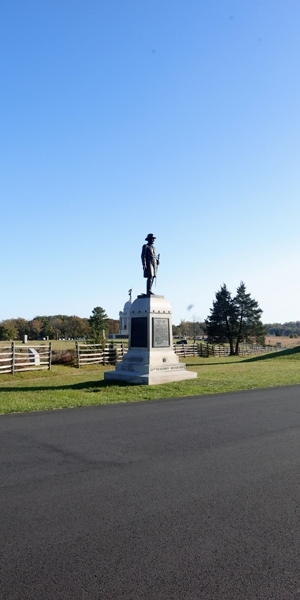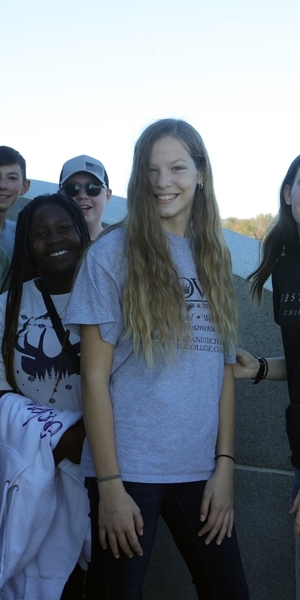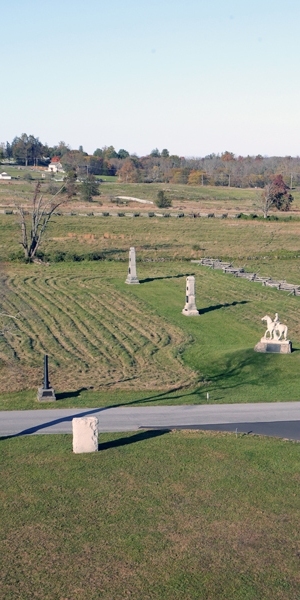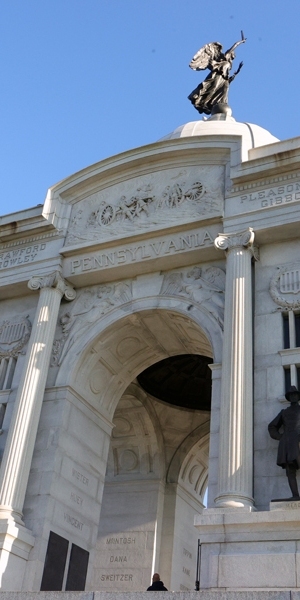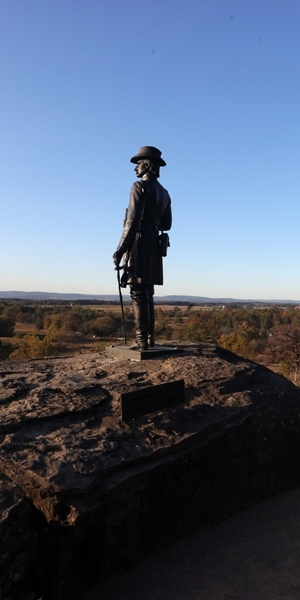(Part 4 of 5)
Historic Journey Through Gettysburg Battlefields: Little Round Top and Devil’s Den
October 18, 2024 – Gettysburg, PA: Genesis Christian Academy students took a step back in time on their educational field trip to Gettysburg, Pennsylvania, where they immersed themselves in the history of the famous 1863 battle that became a turning point in the American Civil War. Led by history teacher Kenneth Hammontree and Civil War historian Tyler Rice, the trip offered the 38 students, parents, and staff a chance to explore the grounds of the pivotal three-day conflict that shaped the nation’s history.
The educational experience centered around the key events of the Battle of Gettysburg, which took place from July 1 to July 3, 1863. As the group roamed the battlefield, historian Tyler Rice gave vivid recountings of the engagements, focusing particularly on two iconic sites—Little Round Top and Devil’s Den.
Bravery at Little Round Top
Standing on the historic Little Round Top, Rice transported the students back to July 2, 1863, a critical moment in the Union’s defense. “Little Round Top was more than just a rocky hill,” Rice explained. “It was the key to holding the Union’s left flank. Losing it would have meant disaster for the Union Army.” He then recounted the fierce fighting between the Confederate Army, led by General Robert E. Lee, and the Union forces under General George Meade.
Rice highlighted the heroism of Colonel Joshua Chamberlain and the 20th Maine Regiment. Vastly outnumbered and facing relentless assaults, Chamberlain’s forces clung to the high ground. When ammunition ran low and the Confederates threatened to break through, Chamberlain made a daring decision: he ordered a bayonet charge down the hill, which caught the Confederates off guard and forced them to retreat. “That charge saved the Union line,” Rice told the group, “and helped secure victory at Gettysburg.”
Little Round Top, with its steep and rocky terrain, became a symbol of tenacity and military brilliance, serving as a key highlight in the students’ understanding of the battle. Today, the site is preserved within Gettysburg National Military Park, where visitors can still walk the rugged trails and stand where soldiers fought with everything they had.
The Bloody Fight at Devil’s Den
From Little Round Top, the group moved on to another dramatic site of the battle—Devil’s Den. The large boulders and rocky formations that characterize this area made it an ideal stronghold during the fighting. On July 2, it became the site of chaotic, bloody combat, with both Union and Confederate soldiers locked in close-quarters battle.
Rice explained how the Union’s Fifth Corps tried to defend Devil’s Den from Confederate forces eager to break through the Union’s defenses. “The boulders made for excellent cover, but they also created confusion,” Rice shared, explaining how the rocky terrain turned the area into a deadly maze of ambushes and attacks. “Soldiers were disoriented, and the fighting was brutal.”
Both the Union and Confederate forces suffered heavy casualties in the fighting for Devil’s Den, which became one of the bloodiest engagements of the entire battle. The strategic importance of this position, coupled with the fierce combat, left a lasting legacy that students learned about firsthand as they stood among the boulders.
Bringing History to Life
For the students of Genesis Christian Academy, the trip to Gettysburg was more than just a history lesson—it was an opportunity to experience the events of the Civil War in a tangible way. As they walked the battlefield, Rice and Hammontree guided them through not just the strategies and outcomes of the conflict, but the human stories of courage, sacrifice, and resilience.
“Being here, seeing these places with my own eyes, makes it all so much more real,” said one student. “You can really feel the weight of what happened here.”
The trip offered a unique blend of education and reflection, leaving the students with a deep appreciation for the events that unfolded at Gettysburg and the broader implications of the Civil War. The visit to Gettysburg not only deepened their understanding of American history but also highlighted the importance of remembering the sacrifices that shaped the nation’s future.

